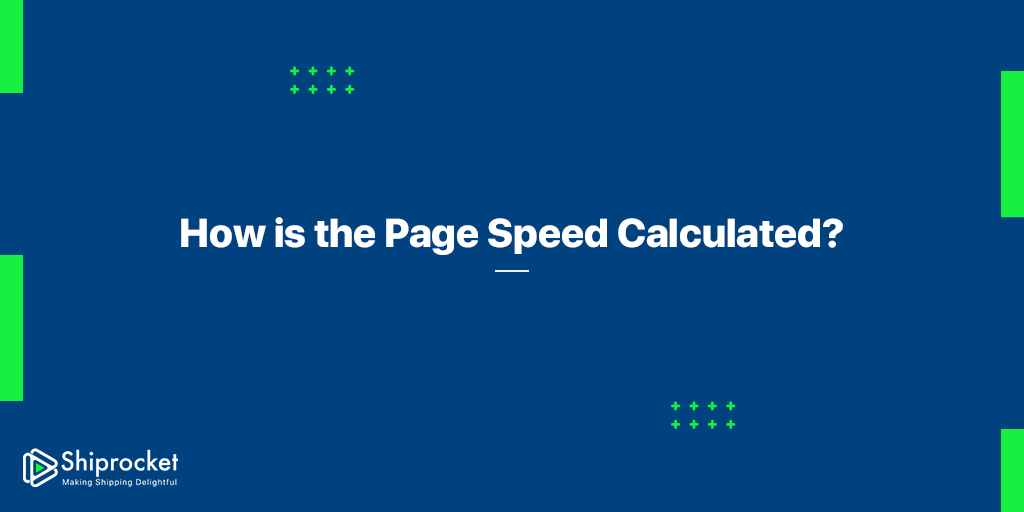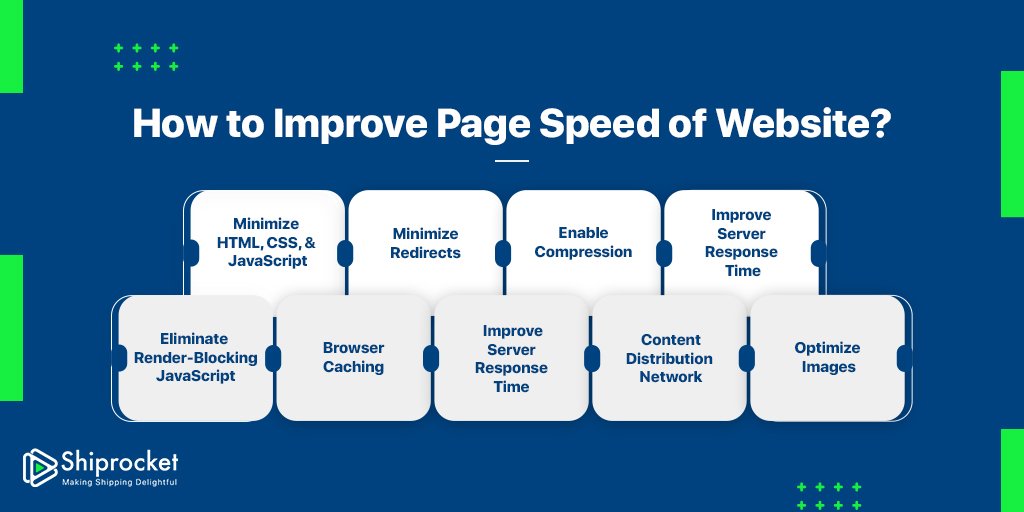Google Page Speed: Why Should You Care About It
As more and more businesses realize the importance of having a website, SEO optimization has become all the way more important. Page Speed plays a crucial role in SEO practices. However, understanding Google Page Speed can be difficult as it is quite a technical subject.

Nevertheless, it is imperative to understand your website page speed, and how can you improve it as it plays a significant role in how a user experiences your website. Read ahead to understand what Page Speed is and how you can improve it.
What Is Page Speed?
Page Speed is the time period that a webpage/website takes to load. A webpage’s loading speed is determined by several factors, such as the site’s server, image compression, and page file size.
You can measure the page speed in the following ways:
- Fully Loaded Page: this tells us about the time a website takes to load 100%. It is the easiest way to determine the page load speed.
- Time to First Byte: this measures the time a page takes to start the loading process. If you ever open a page and it shows a white screen, the Time to First Byte is in process.
- First Contextual Paint: it is the time that a page takes to load enough items to read the page content.
How Is a Webpage Loaded?
In the search engine, a user types in your website name. Then a DNS request is generated. The request points out to the domain name provider, which further points to the location where the files are stored—all the files stored start to load, like HTML, CSS, and JavaScript. Very rarely, all the needed scripts and codes are loaded. Typically, additional requests are required from your server to pull more information. And this is where things start to slow down.
How Is Page Speed Calculated?

In the Page Speed Insight Tool, the score is calculated as per the data in the Lab Data section. The section also says – the performance score is calculated from these metrics (Lab Data metrics). The following are the metrics in Lab Data:
- First Contentful Paint
- Time to Interactive
- Speed Index
- Total Blocking Time
- Largest Contentful Paint
- Cumulative Layout Shift
Reasons That Can Slow Down a Website
The following can be the reasons why your website is loading slow:
- Hosting can cause slow loading of pages.
- One of the biggest reasons behind slow speed are images. Large and heavy images take time to load, and hence, they slow down the loading of web pages.
- Plugins, widgets, and Apps can also slow the download time.
- Theme and large files (if any) can also slow down things.
- If there are any redirects, they will also slow page loading.
Why Page Speed Matters?

Here are a few reasons why page speed matters:
- Slow page load speed impacts user experience. Users want a fast and smooth experience. If there is any delay, you are most likely to lose users.
- Page speed also impacts analytics. A faster loading website will have more users as compared to a slow loading website. Notably, if users leave the website early, this increases the bounce rate.
Many studies and reports show that increased page speed also increases organic traffic, more visitors, and click ratio.
How Fast Should a Webpage Load?
Well, there is no suitable number. The most common recommendation is that the website should load within 3 seconds. As per a Google Study, if a webpage takes more than 3 seconds to load, the mobile visitors leave. There is no particular metric when it comes to page speed, but if a web page loads faster than 3 seconds, it quickly reaches the users.
How to Improve Page Speed of Website?

Minimize HTML, CSS, and JavaScript
You can optimize the codes and remove spaces, comma, and other such unnecessary items. This will increase page speed. You can also remove formatting, core comments, and unused comments.
Minimize Redirects
Whenever a user is redirected to another page, he faces additional waiting time as the DNS request is generated and sent from your server. Suppose a user opens a page and is redirected to a new page. First, a DNS request is generated to open a page and then another request is generated for the redirected page. This increases the page loading time.
Enable Compression
Reduce the size of your HTML, CSS, and Javascript files that are more than 150 bytes. Various software are available for the same. But don’t compress the images with these software. Instead, you can use software like Photoshop, where you have full control over the image quality.
Eliminate Render-Blocking JavaScript
When a user enters a website address, the browser first builds a DOM tree before they render a page. So, if it encounters a script, it executes it first before continuing rendering the page.
Browser Caching
Browsers cache a lot of information – useful and useless information – such as images, JavaScript files, stylesheets, and much more. So, when a user visits your website again, it doesn’t have to reload the entire page.
In most cases, a webpage’s cache expiration date is a year.
Improve Server Response Time
The server response time is affected by the traffic you receive on your webpage, your server’s software, and the hosting solution. So, you need to improve your server response time by looking for slow routing, slow database queries, and fixing them. The optimal server response time is less than 200ms.
Content Distribution Network
Also known as a content delivery network, Content Distribution Network is the servers’ network used to distribute all the delivering content load. The content copies should be stored at multiple data centers to let the users experience faster and reliable access to your website.
Optimize Images
Ensure that your images are not larger than the required size and that they are compressed for your website. Also, ensure they are in the right file format. PNGs are preferred for graphics and JPEGs are preferred for photographs.
You can use CSS sprites that can combine all the images into one. This will save the load time as users will not be waiting for multiple images to load but just one.
Page speed is not the only metric to assess the performance of your website. It is one of several indicators. Having said that, page speed matters in Google Analytics, SEO, and user experience. Ideally, your website should be as fast as possible to give the user a remarkable experience.






